ERC Consolidator Grants for Laserlab Researchers
Since 2013, the European Research Council (ERC) has a new funding scheme: the Consolidator Grant. The new grant is meant for independent researchers with between 7 and 12 years experience after their PhD. The Consolidator Grant thus partially replaces the existing ERC Starting Grant, for which scientists with up to 12 years’ experience were eligible. It provides funding of up to €2.75 million per grant for a maximum of 5 years.
2024
Mikkel Brydegaard (LLC): Remote microscopy, nanoscopy and picoscopy by hyperspectral lidar
Within Brydegaard’s ERC Consolidator Grant project, HyperSense, his group will develop four new prototypes of hyperspectral lidar (or laser radar). Currently lidar systems typically have a single or a couple of wavelengths. His new concept can provide lidar with hundreds of spectral bands which can be used to deduce micro-, nano- and picoscopic details of biological targets.
Applications include classification of pollen on bees, virus in insects, hair growth on mosquitoes, navigation of midges, and diversity of zooplankton
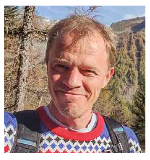
Christoph Heyl (DESY/HIJ): Gas phase sonophotonics
Heyl’s ERC Consolidator project GASONIC is intended to leverage gas-phase light control mediated by intense ultrasound waves to other optical devices and adaptive control schemes, broadening the variety of applications of the innovative concept. These range from efficient light modulators and switches to all-gas-phase adaptive waveguide-like systems shaped by intense acoustic waves. Ultrafast optical switches and
modulators are able to change key properties such as intensity and phase of ultrafast laser pulses. Thus, they are important building blocks for today’s laser systems employed, e.g., for welding, machining, surgery and for scientific applications.
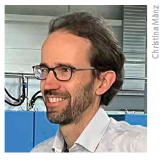
2023
Thomas Bocklitz (Leibnitz-IPHT): Non-invasive computational immunohistochemical staining based on deep learning and multimodal imaging
In order to distinguish between healthy and diseased tis- sue in tumour diagnostics, conventional methods involve staining tissue samples and then having them examined by pathologists. These steps are labour-intensive and require a great amount of time and money. Researchers in the ERC Consolidator Grant project STAIN-IT want to develop a faster and gentler procedure. In the transdisciplinary project, Thomas Bocklitz, head of the research department “Photonic Data Science” at the Leibniz IPHT, and his team are researching and developing a digital staining method. Their goal is to use multimodal imaging techniques in a non-invasive way. To do this, image data is analysed using artificial intelligence to mimic immunohistochemical staining.
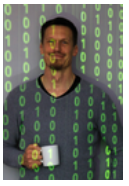
credit:Leibniz-IPHT
Ioachim Pupeza (Leibniz-IPHT):Laser-based infrared vibrational electric-field fingerprinting
The major goal of the ERC Consolidator Grant project LIVE (Laser-based infrared vibrational electric-field fingerprinting), led by Ioachim Pupeza, is to research and develop novel light sources as well as innovative IR technologies and instruments and to open up application potentials for the diagnostic analysis of biomedical samples. The process is expected to significantly increase both the throughput rate of procedures and shorten the time required for a single analysis, which is an important factor for the clinical setting.
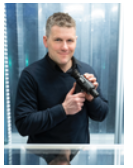
credit:Leibniz-IPHT
Costanza Toninelli (LENS): Quantum interfaces with single molecules
Costanza Toninelli has received an ERC Consolidator Grant for her project “Quantum interfaces with single molecules” (QUINTESSEnCE) project. The challenge is to exploit quantum effects in systems of increasing complexity such as molecules in the solid state, with the possibility of miniaturisation and portability typical of integrated photonic devices. QUINTESSEnCE takes up the challenge, combining the extreme flexibility of molecular chemistry, which allows the creation of molecules with customised energy states, with the most advanced nano- photonic techniques.
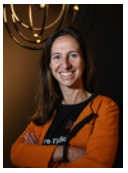
credit:Cabras/LENS
Previous Consolidator Grants
| name | project | year |
|---|---|---|
| Frederico Fiúza (IST) | Extreme particle acceleration in shocks: from the laboratory to astrophysics | 2022 |
| Leticia Tarruell (ICFO) | Unconventional superfluids in quantum gases with competing interactions | 2021 |
| Gerasimos Konstantatos (ICFO) | Mid- and long-wave infrared colloidal quantum dot optoelectronics | 2021 |
| Jochen Mikosch (MBI) | Chemistry in motion – Lasers challenge the start-time dilemma | 2021 |
| Darrick Chang (ICFO) | A new spin on quantum atom-light interactions | 2021 |
| Stefan Witte (LLAMS) | Seeing the invisible: Light-based 3D imaging of opaque nanostructures | 2019 |
| Norbert Schuch (MPQ) | Symmetries and Entanglement in Quantum Matter | 2019 |
| Francesco Scotognella (POLIMI) | Harvesting more solar energy | 2018 |
| Tomáš Čižmár (IPHT) | Holographic micro-endoscopy | 2017 |
| Nicola Poli (LENS) | Gravitational effects on quantum systems | 2017 |
| David Grojo (LP3) | Extreme light for micro-fabrication | 2016 |
| Frank Koppens (ICFO) | Topological nano-photonics | 2016 |
| Gerasimos Konstantatos (ICFO) | HINSOL -Tailor the opto-electronic properties of inorganic nanocrystals, | 2016 |
| Yann Mairesse (CELIA) | Circular attosecond laser radiation to perform chirality-sensitive attosecond spectroscopy. | 2015 |
| Yuri Litvinov (GSI) | Insight into X-ray bursters and the conditions prior to the formation of the solar system | 2015 |
| Leonardo Fallani (LENS) | Topological states of fermionic matter | 2015 |
| Romain Quidant (ICFO) | Quantum Optomechanics with a Levitating Nanoparticle | 2014 |
| Reinhard Kienberger (MPQ) | Attosecond Electron Dynamics in Molecular Systems | 2014 |
| Dario Polli (CUSBO) | Very Fast Imaging by Broadband Coherent Raman | 2014 |
| Peter Baum (MPQ) | Direct Visualisation of Light-Driven Atomic-Scale Carrier Dynamics in Space and Time | 2014 |
| Davide Iannuzzi (LLAMS) | Micromachined optomechanical devices (DIDYMUS) | 2013 |
| Antonio Acín (ICFO) | Quantum information theory with black boxes (QITBOX) | 2013 |
| Jens Limpert (FSU) | Advanced Coherent Ultrafast Laser Pulse Stacking (ACOPS) | 2013 |
